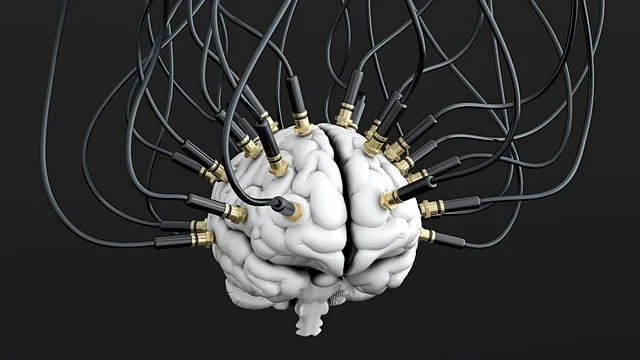Table of Contents

Introduction
Music is a universal language, a timeless art form that has the power to evoke emotions, bring back memories, and connect people across diverse cultures and languages. It’s an integral part of our lives, whether we’re aware of it or not. The subtle melodies playing in a café, the anthems uniting us at a sports event, or the soothing tunes lulling us to sleep – sound is everywhere. But beyond entertainment, it possesses a profound influence on the human brain. This blog explores seven remarkable ways sound impacts our brains, uncovering its transformative power and ability to bring joy into our lives.
1. Emotional Regulation: The Power of Music and Rhythm
Sound has an uncanny ability to touch our very souls, influencing our emotions in ways that words often fail to do. Why does a specific melody make us weep, while another fills us with euphoria? The answer lies in the intricate maze of our brains, particularly the limbic system, where the amygdala resides. This network of structures processes emotions, and melodies have a direct line to it. When we listen, the amygdala lights up, responding to rhythm and harmony, thereby affecting our mood.
The emotional regulation properties of sound are so potent that they are often harnessed in therapies aimed at managing depression and anxiety. Upbeat tunes can elevate spirits, while slower, introspective pieces calm a racing mind. Emotional responses to sound are deeply personal, which is why therapy often involves creating tailored playlists that resonate with an individual’s unique emotional landscape.
Neurochemical effects are equally fascinating. Listening to tunes we adore triggers the release of dopamine, the neurotransmitter associated with pleasure and reward. This dopamine rush can significantly boost mood and motivation. Additionally, engaging in group activities like singing in a choir or participating in drumming circles can lead to the release of oxytocin, the bonding hormone. This explains why sound often brings people together, fostering unity and trust.
From soothing a restless baby with a lullaby to pumping up energy for a workout, sound’s ability to regulate emotions is a phenomenon that permeates daily life, offering comfort, motivation, and a means of expression.
2. Stress Relief: The Healing Power of Music
In today’s fast-paced world, stress is an all-too-common companion. It’s a silent killer that can take a significant toll on mental and physical well-being if left unchecked. Enter sound, the natural stress reliever. Research shows that slower, instrumental pieces can reduce cortisol levels—the hormone associated with stress. It can also lower heart rate and blood pressure, leading to a more relaxed state.
The science behind this is fascinating. Calming sounds can trigger the body’s relaxation response, counteracting stress. The tempo matters, too; slower rhythms, around 60 beats per minute, are particularly effective. This is why classical, ambient, and nature-inspired tracks are often recommended for stress relief.
Meditation-focused compositions, often featuring binaural beats and frequencies designed for relaxation, are powerful tools for mindfulness practices. Incorporating such sounds into daily routines helps replace anxiety with peace and tranquility. In clinical settings, patients have reported lower anxiety levels when exposed to soothing melodies before surgery. Similarly, workplaces that play calming background tracks have observed decreased employee stress and increased productivity.
Additionally, nature-inspired soundscapes—such as the sounds of rain, ocean waves, or chirping birds—have a grounding effect. These natural tones remind us of our connection to the earth, reducing feelings of overwhelm and creating a sense of inner peace. Combining these with mindfulness exercises can further amplify their calming effects.


3. Cognitive Enhancement: Unlocking the Mind’s Potential Music
Sound isn’t just about emotions; it can also give our cognitive abilities a significant boost. Research demonstrates that it enhances memory retention and learning, particularly in the hippocampus, which is responsible for storing and retrieving memories. Certain compositions, such as Mozart’s, have been linked to temporary increases in cognitive function—a phenomenon known as the “Mozart Effect.”
Playing an instrument strengthens neural connections across various brain regions, leading to improved concentration and problem-solving skills. This is why sound is often used in educational settings, as it helps students absorb and retain information more effectively.
The “Mozart Effect” may be controversial, but the consensus remains that auditory stimuli positively influence cognitive function. It boosts focus, aids in tackling complex tasks, and enhances overall mental performance. For instance, instrumental music is often recommended as a background tool during study sessions or creative brainstorming, as it keeps distractions at bay and maintains a steady flow of thought.
Furthermore, auditory learning methods, such as podcasts and audiobooks, have surged in popularity, showcasing the brain’s ability to process and retain information effectively through sound. Students and professionals alike benefit from this auditory approach to absorbing new knowledge.
4. Physical Brain Health: Neurological Benefits of Music
The benefits of auditory stimulation extend to physical brain health. Regular exposure has been linked to a reduced risk of cognitive decline and neurodegenerative diseases such as Alzheimer’s. It acts as mental exercise, keeping the brain sharp and resilient as we age.
Rhythmic patterns also stimulate the motor cortex, aiding motor skills and coordination. This is particularly beneficial for stroke patients and individuals with Parkinson’s disease. Engaging with sound helps these individuals relearn movements and improve physical abilities.
In music therapy sessions, rhythms are used to retrain the brain and body to work in harmony. This form of rehabilitation has shown promising results, giving individuals a sense of empowerment and independence as they regain control over their movements. For example, synchronized clapping or tapping to a beat helps restore motor functions and builds confidence in physical capabilities.


5. Social Connection: Harmonizing Hearts and Minds
Auditory experiences have been a cornerstone of human social interaction since the dawn of civilization. From rhythmic beats uniting early humans to modern symphonies bringing together diverse audiences, sound fosters a sense of community and belonging.
Participating in group activities, such as joining a band or choir, significantly improves social skills. These require collaboration, listening, and non-verbal communication, translating to better emotional intelligence and stronger interpersonal relationships.
Culturally, sound serves as the backbone of rituals, celebrations, and storytelling traditions. It bridges gaps between past and present and unites people across barriers. As a universal language, it transcends borders, uniting individuals under a common rhythm.
Sound also plays a critical role in modern therapeutic practices aimed at improving social behavior. For instance, interactive drumming circles or group singing sessions are used to help individuals with autism spectrum disorders or social anxiety develop communication skills and build confidence.
6. Creativity: A Melodious Path to Innovation
musicis a catalyst for creativity. It stimulates the brain’s default mode network (DMN), associated with daydreaming and imagination. This is why artists and innovators often credit auditory inspiration for sparking ideas and opening pathways to new perspectives.
The right kind of background audio enhances focus during repetitive tasks. Instrumental tracks or lo-fi beats provide a steady, unobtrusive backdrop that keeps the mind engaged without distractions. This is a key productivity booster for many.
Whether you’re an artist seeking inspiration or a businessperson trying to think outside the box, sound can unlock doors to new possibilities. Even nature sounds, like rain or forest ambiance, create an environment conducive to deep thought and brainstorming.
7. Mental Health Recovery: Healing Harmony
Therapeutic use of auditory elements addresses a range of mental health challenges, from PTSD to chronic anxiety. Music therapy provides a structured environment for individuals to express themselves and process emotions.
Personal playlists serve as self-therapy, offering solace and comfort during tough times. Carefully curating songs that resonate emotionally creates a sanctuary that helps navigate the storms of life.
The transformative power of sound in mental health recovery is evident in numerous success stories, whether it’s a veteran coping with trauma or a child with autism finding a means to communicate. Sound serves as a beacon of hope and healing. In hospitals and clinics, sound therapy has become an integral part of holistic treatment plans, helping patients manage pain, reduce anxiety, and regain a sense of control over their emotional states.
Practical Tips for Using Music to Enhance Brain Function
Choose the Right Tunes:
- Relaxation: Opt for classical or ambient tracks with a slow tempo to induce calm.
- Focus: Instrumental jazz or lo-fi beats provide gentle stimulation for productivity.
- Motivation: Upbeat tracks boost energy and drive.
Create Your Own Emotional Symphony: Craft playlists tailored to your mood or purpose. AI-driven platforms like Spotify can help you create personalized soundtracks for workouts, study sessions, or winding down.
Make music Mindful Ritual: Integrate auditory experiences into your routine. Start your day with an inspiring playlist, unwind during your commute, or create a nightly ritual with calming tracks.


Conclusion
music is not merely a form of entertainment; it’s a powerful tool that profoundly influences our brains. From enhancing memory and creativity to reducing stress and fostering social bonds, its benefits are vast and multifaceted. By intentionally incorporating auditory elements into our lives, we can harness their potential to improve mental health and well-being.
The next time you hit play on your favorite song, remember: you’re not just listening—you’re engaging in mental gymnastics that boost your brain’s performance and emotional vitality. Let sound be the symphony of your self-care routine, the melody that guides you through challenges, and the harmony that brings joy to your days.